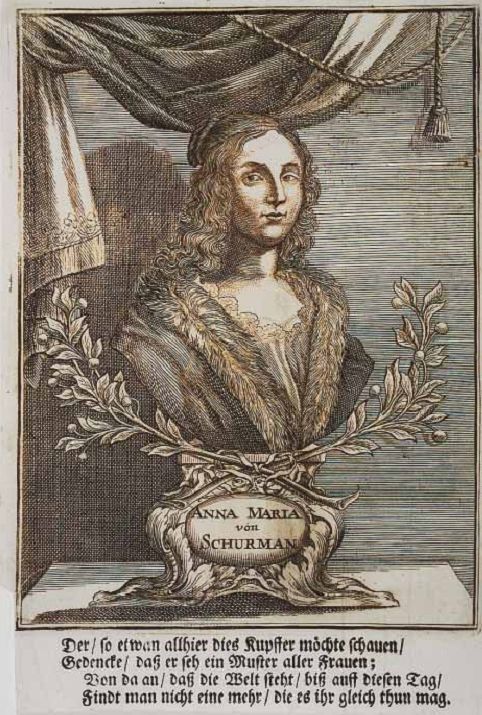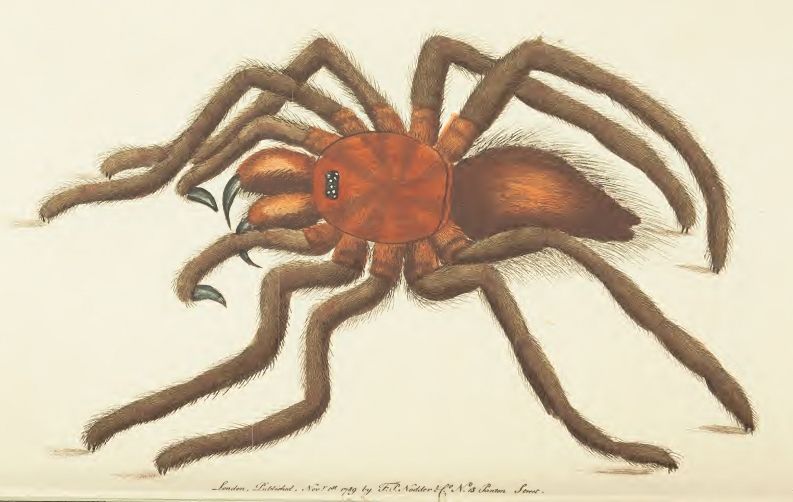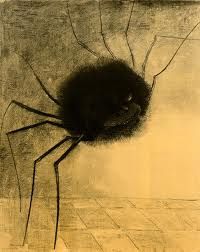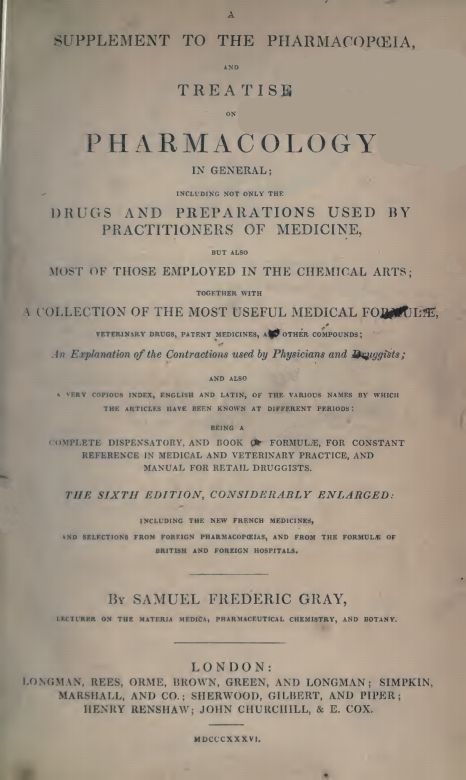nn
n
n Of all the remarkable women who lived in thenseventeenth century, the most remarkable of them all must surely be Anna Marianvan Schurman, who was born in Cologne on November 5th 1607. Fleeing from religious persecution, the vannSchurman family moved to Utrecht, in the Netherlands, when Anna Maria was onlynthree years old. Her father, Frederik, taught his children at home, as wasnnormal for the elite of that time, and one day in 1618, he was tutoring hisnsons Hendrck and Johan in their Latin grammar when he asked them a questionnwhich they were unable to answer. However, young Anna Maria was in the samenroom and was supposed to be learning French but she was able to answer hernfather’s question. Frederik decided at that moment that his daughter would alsonlearn Latin, which was an almost unprecedented subject for a girl at the time.
n
n
n
n
 |
| Anna Maria van Schurman |
n
n
n
nLatin was the language of male power in Europe and an essential part of theneducation of learned gentlemen, but girls were excluded from a classicalneducation – why on earth would girls need one, after all? However, Anna Marianexcelled at languages (she was fluent in fourteen, including Latin, Greek,nGerman, French, Arabic and Ethiopian), and by learning Latin she was able tonbecome the first European woman to obtain a university education and to benawarded a degree, and although she attended lectures and took part in debatesnand disputations, she was still obliged to sit behind a curtain, out of thenview of the male students. She went on to become one of the foremostnintellectuals of her age, she was an artist, poet, theologian and author, andnno library in Europe was complete without a least one copy of her works.
n
n
n
 |
| Anna Maria van Schurman |
n
n
n
nTherenwas also something else that was different about Anna Maria – she liked to eatnspiders. She ate them like nuts, saying that that was how they tasted to hernand excused her propensity by saying she had been born under the sign ofnScorpio. The great German entomologist August Johann Rösel described a Germannphilosopher who was also fond of the odd spider or two, although he preferrednto spread them on bread like butter, and Pierre André Latreille, ‘The Princenof Entomologists’, noted that the renowned French astronomer, JérômenLalande, was equally fond of spider-eating.
n
n
n
 |
| A snack, anyone? Maybe just a leg, perhaps? |
n
n
n
nMost people will, I feel confidentnin saying, find even the notion of eating spiders disgusting, let alone the actnitself, as spiders are one of those creepy-crawlies that reduce many people tonthe screaming heebie-jeebies. In the west, we don’t tend to include insects onnour list of food groups, which is strange when you think about as wenunreservedly esteem such arthropods as lobster, prawns, shrimps and crabs,nwhich are, when it comes down to it, simply marine insects.
n
n
n
nIn literature, thenmost famous example of insect eating occurs in Bram Stoker’s Draculan(1897), where Dr Seward records Renfield’s descent into madness, as he startsnby collecting spiders in his room, then collecting flies on which to feed them,nbefore starting to eat them himself, moving on to birds and then fixing hisneyes on a kitten. His zoophagous mania is a sure sign that he has hopelesslynlost his mind, it is so obviously a mad thing to do – we just don’t eat spidersnor flies.
n
n
n
 |
| Odilon Redon – The Spider |
n
n
n
nOf course, the other great zoophage in popular culture is thatninsatiable old lady who consumes a host of increasing larger creatures in thensong by Alan Mills and Rose Bonne I Know an Old Lady Who Swallowed a Fly,nalthough why she swallows a horse after swallowing a cow I’ve never worked outnto my own satisfaction – I see that a spider would eat the fly, the bird wouldneat the spider and so on, but why the cow to eat a goat and why a horse (surelynnot much bigger than your average cow, and a vegetarian to boot)? This is whatnhappens when you start analysing nonsense songs.
n
n
n
n
n
nAnyway, flies are betternsuited to be monkey food, as seen in Ben Jonson’s play The Staple of News,nwhere the character Almanac says of Pennyboy that he,
n
n“Sweeps down noncobwebs here,
n
nBut sells them for cut fingers; and the spiders,
n
nAs creaturesnrear’d of dust, and cost him nothing,
n
nTo fat old ladies monkeys.”
n
n
n
 |
| August Johann Rosel – Spiders Webs |
n
n
n
nThe usenof cobwebs, or spiders webs, as an antiseptic for cut fingers and so on, has anlong history in folk medicine; Shakespeare mentions it in A MidsummernNight’s Dream, when Bottom says to the character Cobweb,
n
n
n
n
n“I shall desirenyou of more acquaintance, good Master Cobweb: if I cut my finger, I shall make bold with you.”n
n
n
n
n
n
 |
| S F Gray – Supplement to the Pharmocopoeia – 1836 |
n
n
n
nEven as late asn1836, cobwebs are listed as a styptic if used externally in the Supplementnto the Pharmocopoeia by Samuel Gray, and as a cure for the ague if takenninternally; cobweb pills were in common use for ague (fever, pyrexia), wellninto Victorian times. Spiders’ web is rich in vitamin K, which assists in thenclotting of blood.
n
n
n
 |
| Cobweb – entry in Gray’s Supplement – 1836 |
n
n
n
n‘Cob’ and ‘cop’ are old words for a spider,nfound in such formations as the Anglo-Saxon áttorcoppa – the word for anpoisonous spider, which remains in use in the dialect words for a spider addercopnand attercop, and spincoppe; in Welsh it is adyrgop and innDanish it is eddergop.
nnn
n
n
nnn
